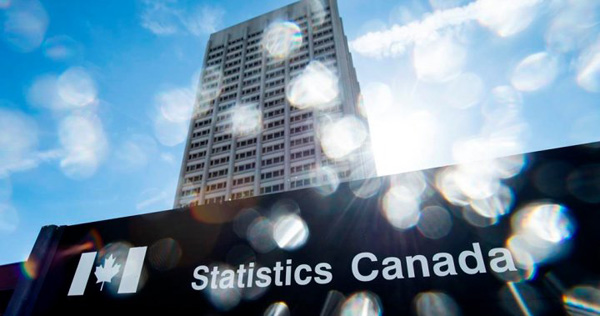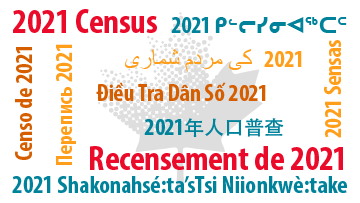Wednesday May 26, 2021 | NATIONAL
By Jalen C Codrington | Island Social Trends [ Editor Mary P Brooke ]
The first Canadian census can be traced back to 1666 in New France. Since 1971, the census has been released every five years, with the last one being held in 2016. The information gathered from the mandatory survey is converted into statistics for use by communities, businesses, and governments to “plan services and make informed decisions about employment, education, health care, market development, and more,” says Statistics Canada.
The federal government uses census data to support realignment of federal electoral district boundaries, plan social programs, and model risk response. Provincial governments also use the census data to estimate the need for a range of supports and services including new daycare centres, schools, retirement homes, health services, and public transportation.
A more comprehensive list of how governments and organizations use census data is posted on the StatCan website.
Two versions – deep and light:
There are two versions of the 2021 census questionnaire, distributed randomly to Canadian households by postal mail: the short-form (accounting for about one-third of surveys) and the long-form (accounting for one-quarter). The census is filled out on the effective date of May 11, 2021, providing a snapshot in time of Canada ‘as it is’ on that one day.
In 2011, the Conservative Government dropped the mandatory longform census, citing worries about the “coercive and intrusive” nature of some of the questions. The optional National Household Survey, intended to replace the longform census, had a collection response rate of 68.6%. [Note: The mandatory short-form census still had a 97% response rate in 2011.] The last-minute change caused issues for Statistics Canada’s methodology, leaving confusing gaps and distracting inconsistencies in the resulting data.
Confidential and mandatory:
The confidentiality of responses is protected by law, and all StatCan employees are required to swear an oath of secrecy.
In 2015, the Liberal Government reinstated the mandatory longform census. During the announcement, Trudeau said, “We committed to a government that functions based on evidence and facts and long-form censuses are an important part of making sure we’re serving constituents in our communities.”
Completion of the longform census is now required by law, and failure to complete the questionnaire can result in fines of up to $500. In the wake of that, the 2016 census had an overall response rate of 98.4%, propelling Canada to the international forefront for census responses.
StatCan hopes for similar if not higher response rates this year, despite the pandemic.
COVID impact so far unknown:
Due to COVID, it’s unknown as to whether people will participate less or more in completing the census questionnaires.
At the low end of things, StatCan expects at least 80% of Canadians will answer the census online this year, though it’s possible that number could be much higher. StatCan says that more online responses make life easier for agency analysts, and safer for workers who would otherwise have to manually input data from on-paper replies at a processing centre in the National Capital Region.
Households from which no census response has been received will be contacted first by phone to remind them to fill out the survey. Those who still fail to complete the census might receive an in-person visit from a census enumerator beginning in late May or June.
Seeking variety and diversity:
The approach for the 2021 Census hopes to yield more varied and diverse responses than in past censuses.
One question, when asking respondents’ beliefs, offers a suggested list of over 200 religions and particular denominations within them (e.g. Eastern Orthodoxy, Sunni Muslim, Spiritualist), covering broad groups (e.g., Christian, Islam, New Wage). Results from this question are used to by religious groups to determine whether or not they need to do more outreach in certain areas, as well as to plan facilities and services within diverse communities. Governments also use these findings to assess the possibility for separate religious schools in some provinces.
As well, the question on race offers a link to a list of over 500 non-exhaustive ethnic groups. StatCan told Island Social Trends (IST) that this data is used “to track the progress of these groups in areas such as employment and income, education and housing.” Similarly, this approach can be used with past census data to measure socioeconomic and demographic characteristics of these groups over time.
Sex and gender:
A new feature in the 2021 census is the distinction between sex and gender. In June 2017, Bill C-16 was passed in parliament, protecting gender expression under the Canadian Human Rights Act and the Criminal Code. In 2018, the federal budget allocated funds to create the Centre for Gender, Diversity and Inclusion Statistics, which emphasized the need for data on the non-binary and transgender population. After engaging with the LGBTQ2S+ community following the 2016 census, StatCan broadened the question for the new census, in part to address data gaps on the transgender communities within Canada.
Broader financial realities:
One element IST felt was missing from the survey was information on financial dependents. The questionnaire did not ask, for example, if children living on their own receive transfer payments from their parents, or if older parents receive transfer payments from their children. StatCan admitted that information on transfers between households are important elements to better understand the economic well-being of Canadians, and told this publication that the last time they asked for this information was in an annual income survey in 2006. The results of that analysis can be found online. Unfortunately, Statcan said, the 2021 census did not have enough space to address all of these financial concerns.
Census skips the COVID beat:
While it may seem strange to find no questions asking about the socioeconomic impact of COVID-19, StatCan says it has a variety of other options available to measure the impact of the pandemic on Canadians. Crowdsourcing surveys, modelling techniques, and web panel approaches allow for COVID-19 data to be produced for policy- and decision-makers across the country. Furthermore, the census does ask new questions about how many weeks of the last year Canadians have worked, in order to gauge the possible economic impacts of the pandemic.
Forward from here:
To explore this further, all questions on the longform census can be found online.
Analysts within StatCan will spend the coming months sifting through and crunching the data gleaned from the census forms before releasing results in 2022.
===== About the writer:
Jalen C Codrington is a fourth-year Philosophy student at the University of Victoria. In summer 2021, he is the Copy Desk editor with Island Social Trends.






